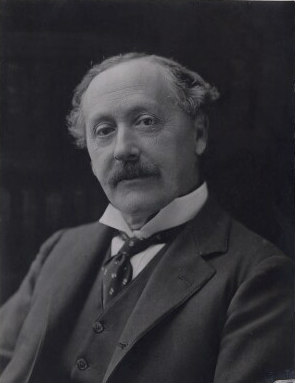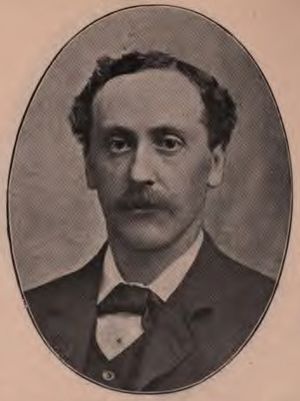Herbert Gladstone, 1st Viscount Gladstone facts for kids
Quick facts for kids
The Viscount Gladstone
|
|
|---|---|

Gladstone c. 1910
|
|
| 1st Governor-General of South Africa | |
| In office 31 May 1910 – 8 September 1914 |
|
| Monarch | George V |
| Prime Minister | South African: Louis Botha British: H. H. Asquith |
| Preceded by | Walter Hely-Hutchinson as High Commissioner for Southern Africa |
| Succeeded by | The Viscount Buxton |
| Home Secretary | |
| In office 11 December 1905 – 19 February 1910 |
|
| Prime Minister | Henry Campbell-Bannerman H. H. Asquith |
| Preceded by | Aretas Akers-Douglas |
| Succeeded by | Winston Churchill |
| Personal details | |
| Born |
Herbert John Gladstone
7 January 1854 Downing Street Westminster, Middlesex, England |
| Died | 6 March 1930 (aged 76) Ware, Hertfordshire, England |
| Political party | Liberal |
| Spouse |
Dorothy Mary Paget
(m. 1901) |
| Children | 0 |
| Parents |
|
| Alma mater | University College, Oxford |
Herbert John Gladstone (born January 7, 1854 – died March 6, 1930) was an important British politician. He was the youngest son of William Ewart Gladstone, who was a famous Prime Minister. Herbert Gladstone held two big jobs: he was the Home Secretary (a top government minister) from 1905 to 1910, and then the first Governor-General of the Union of South Africa from 1910 to 1914.
As a party leader, he helped the Liberal Party become stronger. He stopped disagreements during the Second Boer War and made the party more modern. He also encouraged ordinary working people to become politicians. In 1903, he made a special agreement with the Labour Party. This agreement helped the Liberal Party win a huge victory in the 1906 election.
As Home Secretary, he helped create many new laws. These laws improved working conditions for people. For example, he helped make laws about workers' compensation and factory safety. He also helped create the law for an eight-hour workday for coal miners. Many historians say he was a very progressive politician.
Contents
Early Life and Education
Herbert Gladstone was born on January 7, 1854, in Downing Street, London. His father, William Ewart Gladstone, was a powerful politician and later Prime Minister. His mother was Catherine Glynne.
He went to Eton College, a well-known school. After that, he studied at University College, Oxford. For three years, he taught history at Keble College, Oxford.
Start of His Political Career
In 1880, Herbert Gladstone started working for his father as a private secretary. In the same year, he became a Member of Parliament (MP) for Leeds. This meant he was elected to represent the people of Leeds in the British Parliament.
In 1885, he was re-elected as an MP for Leeds West. He held several junior government roles. These included being a junior Lord of the Treasury and Deputy Commissioner of the Office of Works. He also served as Financial Secretary to the War Office.
In 1892, he became the Under-Secretary of State for the Home Department. Two years later, he became the First Commissioner of Works. This job involved looking after government buildings. He also became a member of the Privy Council, a group of important advisors to the King. In 1895, he arranged for the first typing office in the Houses of Parliament.
Leading the Liberal Party
In 1899, Gladstone became the Chief Whip for the Liberal Party. This meant he was in charge of making sure Liberal MPs voted the right way. In 1903, he made an important agreement with the Labour Party. This agreement, called the Gladstone-MacDonald pact, helped both parties win more seats in Parliament.
This pact was very successful. It helped the Liberal Party win a massive victory in the 1906 general election. They won 397 seats, giving them a large majority in Parliament.
Home Secretary and New Laws
In 1905, Herbert Gladstone became the Home Secretary. This is a very important job in the government. The Home Secretary is in charge of law and order, and many social issues.
During his time as Home Secretary, Gladstone helped pass many important laws. These laws are known as the Liberal welfare reforms. They aimed to improve the lives of ordinary people.
Some of the key laws he helped create include:
- The Workmen's Compensation Act of 1906: This law helped workers who were injured on the job.
- The Children Act of 1908: This law protected children and improved their welfare.
- The Trade Boards Act of 1909: This law helped set fair wages in certain industries.
- The Coal Mines Regulation Act of 1908: This law set an eight-hour working day for miners.
He also had some disagreements with King Edward VII. For example, the King was unhappy when Gladstone allowed a religious procession in London. The King also disagreed with Gladstone appointing two women to a Royal Commission. This commission was looking into divorce laws. Despite these issues, Gladstone was a very active and effective Home Secretary.
Governor-General of South Africa
In 1910, Gladstone was appointed the first Governor-General of the Union of South Africa. This was a very important role. He was also made a Viscount, which is a noble title, and became Viscount Gladstone.
He served in South Africa until 1914. His role was to represent the British King and oversee the new Union of South Africa.
Later Life and Family
After returning from South Africa in 1914, Lord Gladstone helped with many charities. He was involved with groups helping war refugees and supporting hospitals during the First World War.
In 1901, Lord Gladstone married Dorothy Mary Paget. They did not have any children. He passed away in March 1930 at the age of 76. Because he had no children, his title ended when he died.
|


